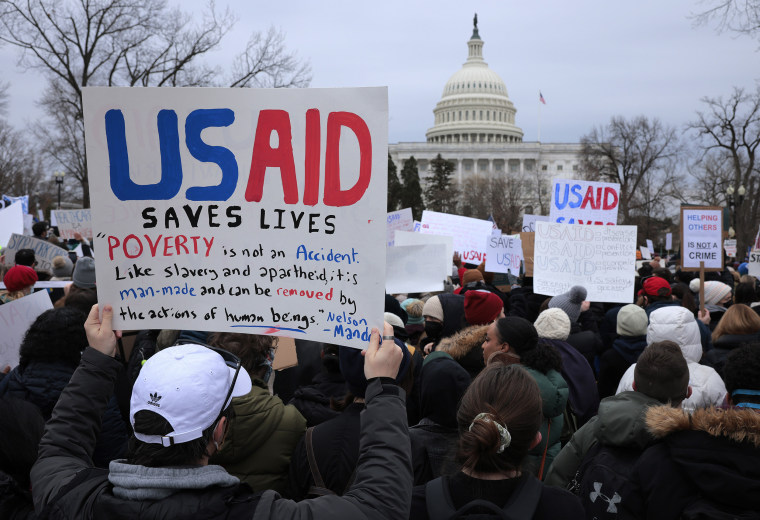Report on the Cultural Impact of “6 Months Later” in the Context of Sustainable Development Goals
Executive Summary
An analysis of the critical reception of Megan Moroney’s song, “6 Months Later,” released circa September 2025, reveals significant alignment with several United Nations Sustainable Development Goals (SDGs). The song, described as a “feminist corrective,” primarily supports SDG 5 (Gender Equality) while also contributing to the objectives of SDG 10 (Reduced Inequalities) and SDG 8 (Decent Work and Economic Growth).
Primary Alignment: SDG 5 (Gender Equality)
The song’s characterization as a “feminist corrective” directly engages with the core targets of SDG 5, which aims to achieve gender equality and empower all women and girls.
- Challenging Stereotypes: The work contributes to ending all forms of discrimination and harmful practices by providing a strong female narrative within the country music genre, a space where gendered stereotypes have historically been prevalent.
- Promoting Female Voices: By placing Moroney in the artistic lineage of influential female figures such as Dolly Parton, The Chicks, and Shania Twain, the critique highlights a tradition of female empowerment and representation in media, which is crucial for ensuring women’s full and effective participation in cultural life.
- Cultural Representation: The song serves as a cultural product that amplifies female perspectives, contributing to a more balanced and equitable representation of genders in the public sphere.
Secondary Contributions to Sustainable Development
The impact of the song extends to other interconnected SDGs.
- SDG 10 (Reduced Inequalities): By elevating a female artist’s perspective, the song helps reduce inequalities within the cultural and creative industries, promoting social and economic inclusion.
- SDG 8 (Decent Work and Economic Growth): The success and visibility of female artists like Megan Moroney support inclusive and sustainable economic growth by creating opportunities and promoting full and productive employment for women in the arts.
Conclusion
The critical acclaim for Megan Moroney’s “6 Months Later” as a “feminist corrective” illustrates the powerful role of arts and culture in advancing the Sustainable Development Goals. The song acts as a vehicle for promoting gender equality, reducing systemic inequalities within a major industry, and fostering an environment of inclusive growth, thereby making a tangible contribution to the global 2030 Agenda for Sustainable Development.
1. Which SDGs are addressed or connected to the issues highlighted in the article?
SDG 5: Gender Equality
- The article explicitly describes a new song as a “Feminist Corrective.” This phrase directly connects the content to the core mission of SDG 5, which is to achieve gender equality and empower all women and girls.
- By situating the song in the lineage of artists like Dolly Parton, The Chicks, and Shania Twain—who are known for challenging traditional gender roles within their genre—the article highlights a cultural effort to combat gender stereotypes and promote a more equitable representation of women, which is a key aspect of SDG 5.
2. What specific targets under those SDGs can be identified based on the article’s content?
Target 5.1: End all forms of discrimination against all women and girls everywhere.
- The description of the song as a “Feminist Corrective” implies that it is working to counteract prevailing discriminatory attitudes or stereotypes against women, particularly within the cultural sphere. Cultural products like songs can be powerful tools in shifting social norms and challenging the informal discrimination that underpins systemic inequality.
Target 5.c: Adopt and strengthen sound policies and enforceable legislation for the promotion of gender equality and the empowerment of all women and girls at all levels.
- While a song is not a policy, cultural movements often precede and build public support for policy changes. By acting as a “corrective,” the song contributes to a broader social dialogue that can create the political will for adopting and strengthening policies aimed at promoting gender equality. It helps shape a public consciousness that is more receptive to such legislation.
3. Are there any indicators mentioned or implied in the article that can be used to measure progress towards the identified targets?
Implied Qualitative Indicator: Prevalence and critical recognition of cultural expressions promoting gender equality.
- The article does not contain quantitative data or official SDG indicators. However, it implies a qualitative indicator for progress. The very existence of the article, which identifies and critically analyzes a mainstream song as a “Feminist Corrective,” serves as evidence of an increasing focus on gender equality in public and cultural discourse.
- Measuring the frequency, visibility, and critical reception of such cultural products can be an informal way to gauge shifts in societal attitudes towards gender equality, which is a precursor to achieving the goals outlined in SDG 5.
Summary Table: SDGs, Targets, and Indicators
| SDGs | Targets | Indicators |
|---|---|---|
| SDG 5: Gender Equality |
|
|
Source: nytimes.com







